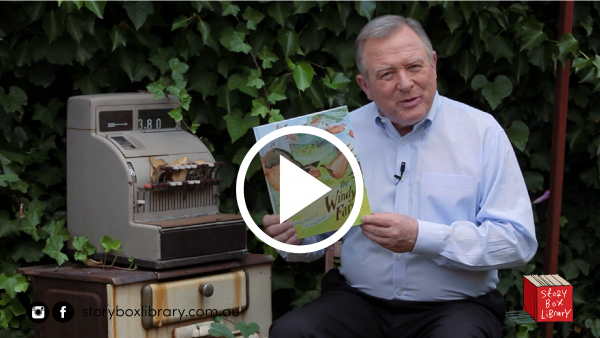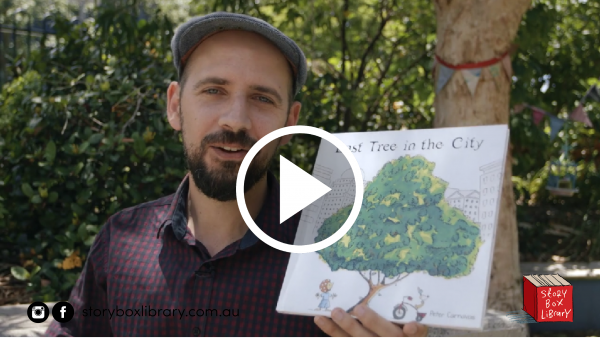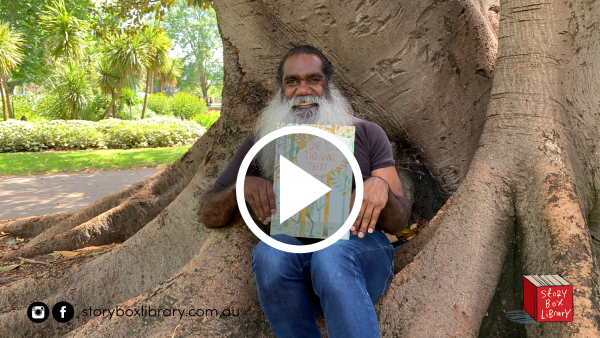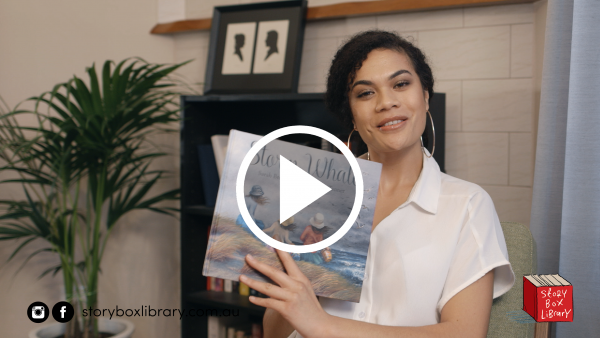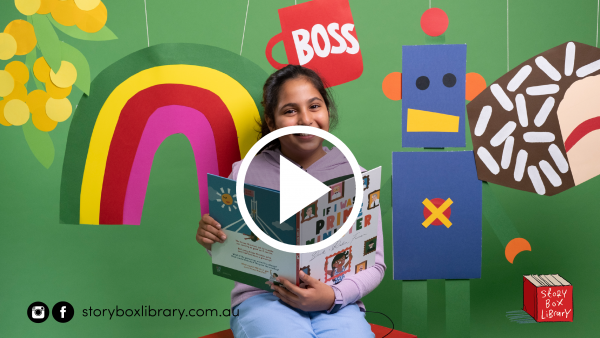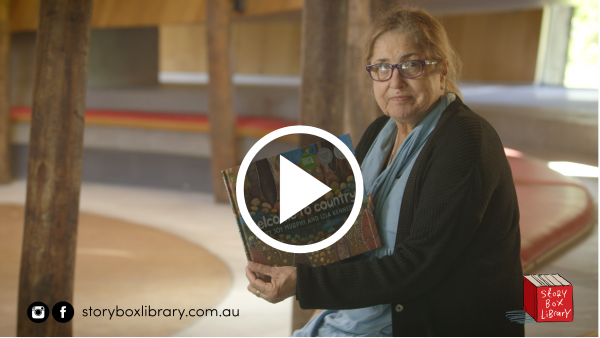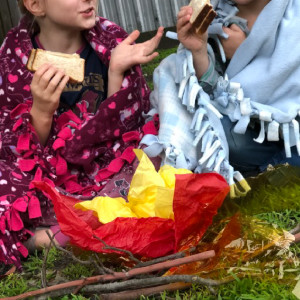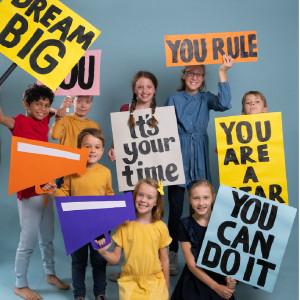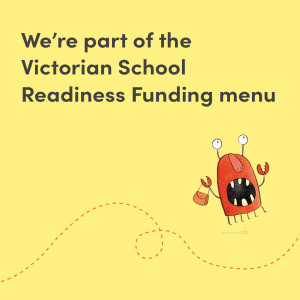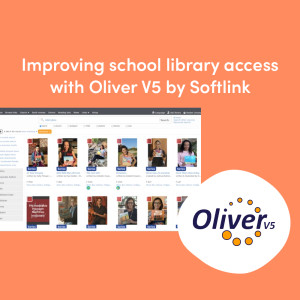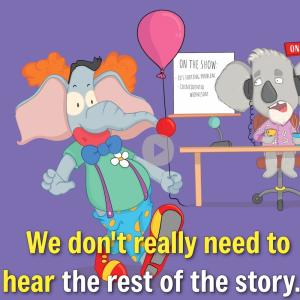Join Story Box Library and #BeatAirPollution
29 May 2019
'We can't stop breathing. But we can do something about the quality of our air.'
Celebrated on June 5th each year, World Environment Day is an initiative of the United Nations, aiming to encourage local, national and global awareness and action to protect our environment.
This year, World Environment Day will be hosted by China and will focus on Air Pollution.
We choose to provide schools, libraries and families with lots of stories about the environment, and would love to help you explore air pollution and environment issues with story.
- Keep reading for a list of stories we recommend viewing this World Environment Day, and for ideas on how to:
- Help children show their understanding of issues presented in the stories
- Study how different authors explore environmental themes through story
- Further investigate and discuss issues presented in the stories
- Encourage children to develop their own thoughts and opinions
- Take small steps towards action and help #BeatAirPollution
Air Pollution
Story Box Library classic The Windy Farm specifically relates to the 2019 World Environment Day theme of Air Pollution, as do two of our most recent stories, The Last Tree in the City and One Thousand Trees.
Providing a wonderful springboard into further exploration of environmental themes across all Learning Areas of the Australian Curriculum, these stories can be utilised in the classroom for English, Maths, Humanities, Science, Health & PE, and Art & Technology.
For use in the English classroom, students could:
- Start a media file by collecting snippets and screenshots from online and print newspapers that relate to air pollution.
- Write a Haiku poem about air.
- Write a procedure text on how to plant a tree.
- Write or draw a narrative using the speculative fiction genre that addresses the scenario: What if there were no trees left at all?
- Write a Letter to the Editor, outlining your opinion on whether Australia should be investing in renewable energy.
To incorporate these ideas for Maths classes, students could try to:
- Conduct a tree count in your local area.
- Find statistics on the rates and locations of deforestation in Australia since European settlement.
- Each student could analyse their family's energy usage and devise a plan to reduce their family's energy usage.
For Humanities, students could:
- Use a mind-map to show how people use trees and why they are important to people, animals and the environment.
- Investigate groups or organisations that are working to protect trees.
- Create an infographic or advertisement to show how individuals and groups can contribute to protecting trees on local, national and global scales.
- As a class, brainstorm a list of power-operated appliances you use throughout the day. How would your day be different if you didn't have these appliances?
- Undertake some research and create a timeline to show the different types of energy used over time from Pre-historic times to present.
- Create two T-charts outlining the advantages and disadvantages of renewable and non-renewable resources.
- Brainstorm solutions that address the issue of air pollution.
Investigate during Science, by asking students to:
- Undertake an air quality experiment in your local area.
- Keep a tree journal:
- Observe a range of trees. Sketch or photograph the trees for your journal.
- Investigate (using magnifying glass or dissection) and make observations.
- Devise questions for further investigation that arise from the activity.
- Plant and cultivate a seedling in a jar or propagate a tree or plant cutting. Discuss what is needed to care for and grow a plant and compare this with growing a tree or plant from a seedling.
- Undertake research to discover how Aboriginal Australians combined science and spiritual beliefs to sustainably manage forests before European settlement.
Get active and environmentally-conscious in Health & PE by:
- Taking a walk in the bush. Pose a question from your nature walk that you'd like to investigate scientifically. Make predictions based on prior knowledge and plan your investigation.
Using creativity in Arts & Technology, students could:
- Collect pieces of nature and use these to inspire a piece of artwork.
- As a class, create a mural that represents environment and sustainability.
- Use a digital camera to capture perspectives of trees from different positions. Use the photos to create a photography exhibition.
- Investigate and draw a flow diagram that shows how electricity is created from wind.
- Make a model of a wind turbine to understand how they work, finding instructions online.
Broader Environmental Issues
In addition to the theme of Air Pollution, other stories in our library allow children to explore broader environmental issues.
Ocean and River Environments
I am Jellyfish, A River and Storm Whale encourage the exploration of ocean and river environments that are under threat by human activity.
After viewing these stories, students could try:
- Creating a mural of images showing the various ways humans use the seas and oceans, and actions that are damaging seas and oceans.
- Understanding the effect of pollution on the marine environment by creating a plastic bag jellyfish.
- Creating a list of simple acts individuals can take to protect the ocean.
- Testing and analysing the water quality at a local creek or river.
- Discussing and list ways in which humans can take better care of rivers.
Listing steps being taken in today's world to ensure the protection of whales and other marine life. - Fossick on the beach and re-use findings in artwork.
Taking Action
If I Was Prime Minister and Benny Bungarra's Big Bush Clean-Up encourage children to take action. While Too Much for Turtle, Owl Know How and The Patchwork Bike are great examples of sustainability through re-using objects as art and technology.
- Invite an elder or member of the local language group to share how they have traditionally used natural materials for different purposes and how they might combine different materials to produce tools and utensils.
- Undertake an Emu Bop as a class (cleaning up rubbish in the school yard) or take part in a Schools Clean-Up Day.
- Choose an item from the recycling bin. Instead of throwing it away, find, design and create another use for it.
- Research artists who create art by recycling litter, and use your findings to inspire your own recycled art work or sculpture.
- Critique a range of product packaging for their impact on sustainability.
- Devise a design solution to improve how the school removes and manages waste.
- Interview parents, grandparents, teachers and other adults to find out how individuals can peacefully lobby for change (e.g. write to local member, petition, protest).
Personal Connections with Nature
Florette and Welcome to Country highlight the personal connections humans have with nature.
After watching the stories, invite an elder or member of the local language group to share knowledge or stories about the importance of the local environment (Please respect the beliefs of your guest speaker and allow them to choose the information and stories they feel comfortable sharing with the children. The Aboriginal Education Consultative Group in your state may be able to provide you with assistance and guidance).
Want more Classroom Activities? As a school subscriber, you have full access to Classroom Activities for every story in our library. Sign up for a FREE trial, subscribe now or get in touch!


